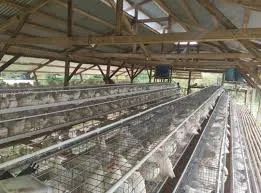Effective Techniques for Turkey Scalding and Processing Methods
Oct . 10, 2024 18:24 Back to list
Effective Techniques for Turkey Scalding and Processing Methods
The Role of Turkey Scalders in Poultry Processing
In the poultry industry, efficiency and hygiene are paramount, especially during the initial stages of processing birds. One essential piece of equipment that plays a crucial role in this regard is the turkey scalder. Scalding is the process of immersing birds in hot water to loosen feathers and prepare them for plucking. This article delves into the importance of turkey scalders, their operational mechanisms, and the benefits they provide to poultry processors.
Turkey scalders function primarily by subjecting the birds to controlled temperatures that help break down the protein structure in the feathers and skin. Typically, the scalding water is heated to a temperature ranging from 140°F to 160°F (60°C to 71°C), depending on the desired plucking efficiency and the age of the birds. The timing of the immersion is equally critical; shorter scalding times are used for younger birds, while older turkeys may require longer durations to achieve optimal feather removal.
The operation of a turkey scalder involves several key components a water tank, heating elements, a temperature control system, and often, a mechanical stirring mechanism to ensure even heating
. Advanced systems incorporate features such as automatic temperature regulation and water recirculation to ensure energy efficiency and consistent results. Some processors also employ additive solutions to enhance the scalding process, ensuring that the feathers detach more easily without compromising the quality of the meat.turkey scalder

One significant benefit of using turkey scalders is the improvement in processing speed. High-efficiency scalder systems can process large volumes of birds within a short time frame, thus meeting the demands of commercial poultry operations. This speed is vital during peak processing seasons when the volume of turkeys can significantly increase, such as around Thanksgiving in the United States.
Moreover, properly executed scalding contributes to the overall hygiene and safety of the processed turkeys. By effectively loosening feathers and enabling thorough plucking, scalding minimizes the risk of contamination from dirt and bacteria that may cling to feathers. This step is essential in maintaining high standards of food safety, as it reduces the likelihood of pathogens reaching the meat.
Challenges do exist, however. If turkeys are scalded at excessively high temperatures or for prolonged periods, it can lead to skin damage or burning, which affects both the appearance and quality of the meat. Therefore, precise monitoring and control during the scalding process are vital to avoid such pitfalls.
In conclusion, turkey scalders play an indispensable role in poultry processing, contributing to efficiency, hygiene, and product quality. As the poultry industry continues to evolve, innovations in scalder technology promise to further enhance these benefits, ensuring that processors can meet consumer demands for fast, safe, and high-quality turkey products. Whether for large-scale operations or smaller farms, the operational importance of turkey scalders cannot be overstated, as they stand at the forefront of modern poultry processing methods.
-
Automatic Feeding Line System-Pan Feeder Nipple Drinker|Anping County Yize Metal Products Co., Ltd.
NewsJul.29,2025
-
Hot Sale 24 & 18 Door Rabbit Cages - Premium Breeding Solutions
NewsJul.25,2025
-
Automatic Feeding Line System Pan Feeder Nipple Drinker - Anping County Yize Metal Products Co., Ltd.
NewsJul.21,2025
-
Automatic Feeding Line System Pan Feeder Nipple Drinker - Anping County Yize Metal Products Co., Ltd.
NewsJul.21,2025
-
Automatic Feeding Line System - Anping Yize | Precision & Nipple
NewsJul.21,2025
-
Automatic Feeding Line System - Anping Yize | Precision & Nipple
NewsJul.21,2025






